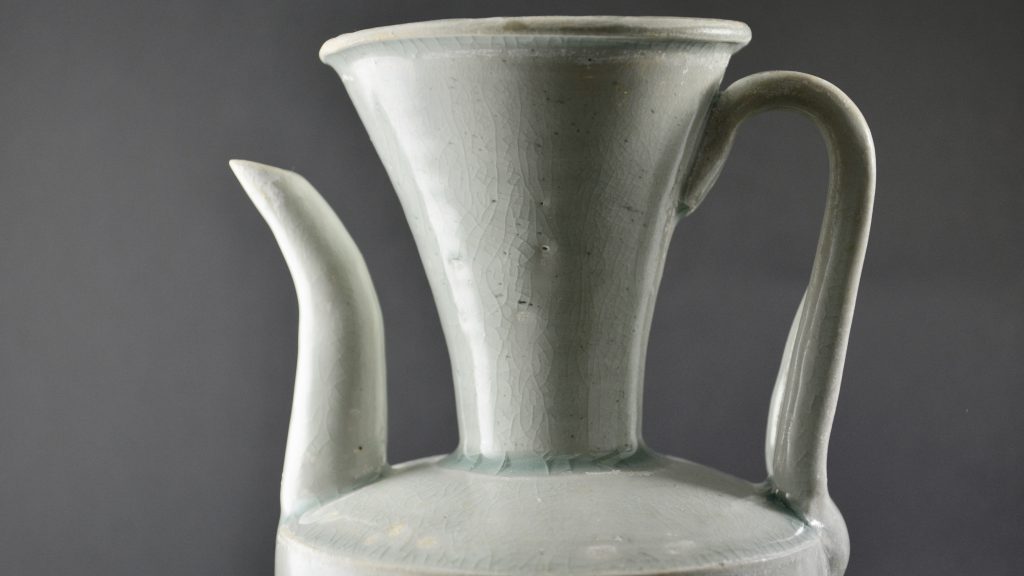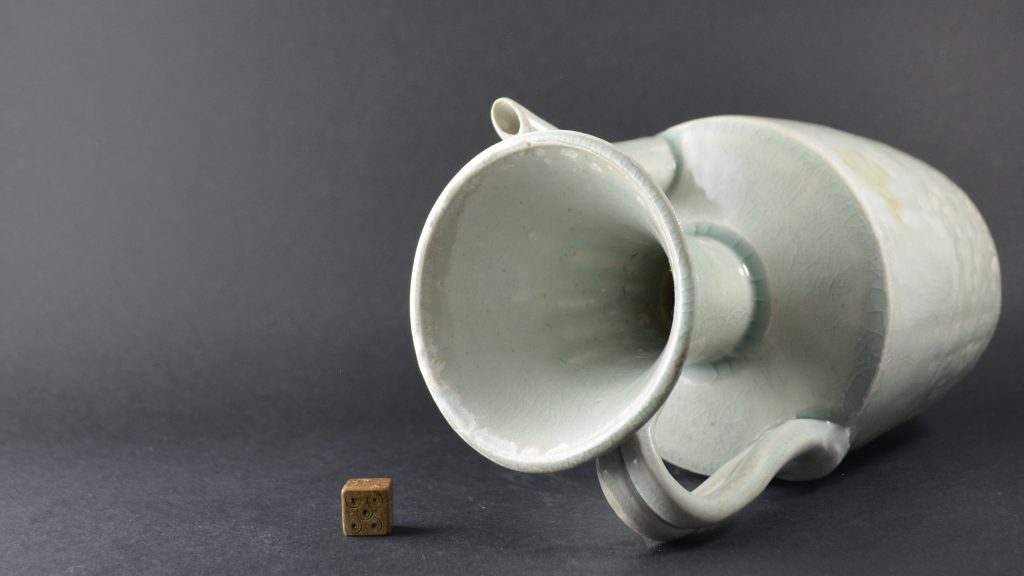
A Large Song Qingbai Porcelain Ewer
A Song Qingbai wine ewer, 11th or 12th century. This thickly potted tall Song dynasty porcelain ewer with a bifurcated would probably have had a warming bowl with it. These were close fitting but would have enabled warm water to keep the wine at the right temperature.
SOLD
- Condition
- Good condition, some glaze loss to the extremities, a pale brown stain to the reverse side.
- Size
- Height : 21.6 cm (8 1/2 inches)
- Provenance
- The Peter Arlidge Collection of Song Ceramics.
- Stock number
- 25053
Information
Qingbai Ware :
The earliest known qingbai wares were produced in Jingdezhen in Jiangxi province around the late 10th century and are characterized by faint pale-blue glazes on low, wide forms. Qingbai continued to be enormously popular and highly produced throughout the Song dynasty (960-1279) and was prevalent in the Yuan dynasty (1279-1368), but slackened during the Ming dynasty (1368-1644) until being replaced by tianbai, ‘sweet white’ ware. The initial forms of qingbai were simple bowls and dishes, but by the mid-Northern Song the forms had advanced to include a wide variety of objects used for daily life such as ewers, boxes, incense burners, granary models, vases, jars, sculptures, cups, cupstands, water droppers, lamps, grave wares, and tools for writing and painting. The precedent for the majority of these forms is found in earlier metalwork and lacquer and Rawson has suggested that the imitation of silver was the primary force behind the production of white wares, including qingbai.
The Peter Arlidge Collection of Song Ceramics :
These were collected during a 50-year career in transport investment. Peter, who describes himself as an ‘old-fashioned collector’, comes from a long line of potters and was the first son not to take up the family profession. Instead, he had a career in transport investment that made him resident in countries such as Malaysia, Vietnam and Indonesia where his love affair with ceramics developed. During Peter’s time in Malaysia in the 1960s his interest in Chinese ceramics peaked and when he later moved to Indonesia, he bought the first two pieces for what would become a much prized personal collection.










